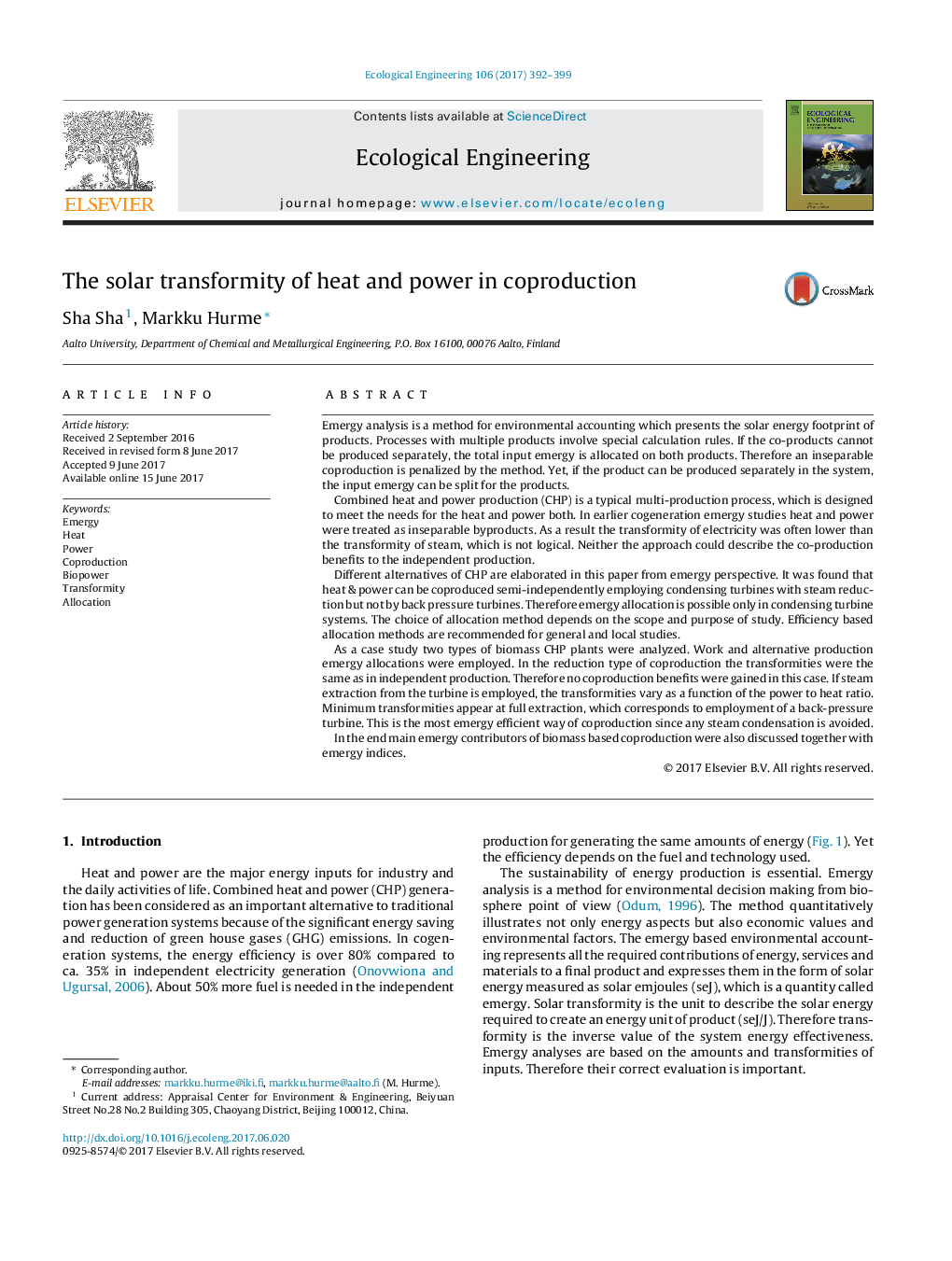| کد مقاله | کد نشریه | سال انتشار | مقاله انگلیسی | نسخه تمام متن |
|---|---|---|---|---|
| 5743856 | 1412322 | 2017 | 8 صفحه PDF | دانلود رایگان |
Emergy analysis is a method for environmental accounting which presents the solar energy footprint of products. Processes with multiple products involve special calculation rules. If the co-products cannot be produced separately, the total input emergy is allocated on both products. Therefore an inseparable coproduction is penalized by the method. Yet, if the product can be produced separately in the system, the input emergy can be split for the products.Combined heat and power production (CHP) is a typical multi-production process, which is designed to meet the needs for the heat and power both. In earlier cogeneration emergy studies heat and power were treated as inseparable byproducts. As a result the transformity of electricity was often lower than the transformity of steam, which is not logical. Neither the approach could describe the co-production benefits to the independent production.Different alternatives of CHP are elaborated in this paper from emergy perspective. It was found that heat & power can be coproduced semi-independently employing condensing turbines with steam reduction but not by back pressure turbines. Therefore emergy allocation is possible only in condensing turbine systems. The choice of allocation method depends on the scope and purpose of study. Efficiency based allocation methods are recommended for general and local studies.As a case study two types of biomass CHP plants were analyzed. Work and alternative production emergy allocations were employed. In the reduction type of coproduction the transformities were the same as in independent production. Therefore no coproduction benefits were gained in this case. If steam extraction from the turbine is employed, the transformities vary as a function of the power to heat ratio. Minimum transformities appear at full extraction, which corresponds to employment of a back-pressure turbine. This is the most emergy efficient way of coproduction since any steam condensation is avoided.In the end main emergy contributors of biomass based coproduction were also discussed together with emergy indices.
Journal: Ecological Engineering - Volume 106, Part A, September 2017, Pages 392-399
